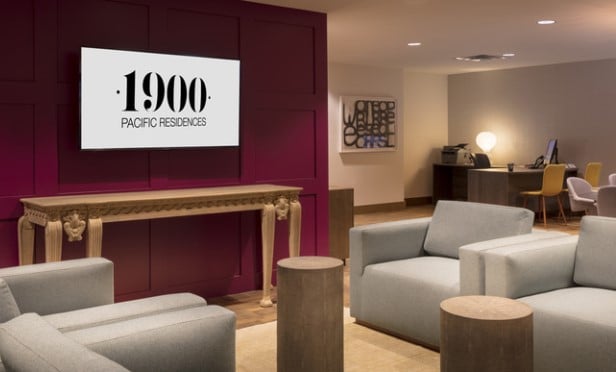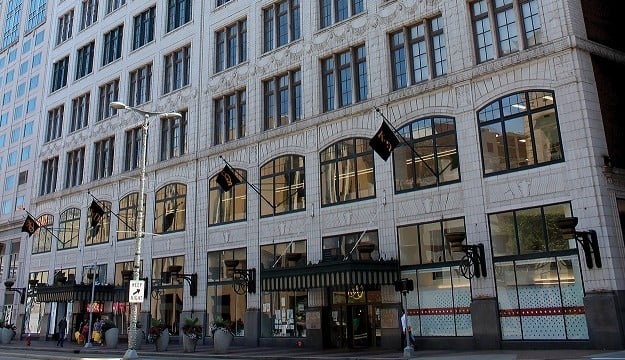
ATLANTA, GA—Three senior leaders of Franklin Street say retail developers in the Atlanta market are concerned about high rents and rising property costs, while focusing simultaneously on urban core redevelopments and the creation of newer, more vibrant suburban experiences. The conversation included Monetha Cobb, managing director; and Greg Eisenman and Sterling Hale, both senior directors. All three work in Franklin Street's Retail Occupier Services.
What are some of the major trends impacting the retail market in Atlanta?
Cobb: Atlanta, like many major markets, is experiencing changes in its retail landscape, thus impacting how real estate development is executed. We represent clients that are analyzing real estate through a more intense lens because of the information that is available to them regarding their specific customer base. Retailers in general have become much more in tune with how to apply this data to achieve greater sales in recent years, thus making it a much more imperative piece for selecting sites. In addition, specifically for markets such as Atlanta that cover a large geographic area, you are seeing a big focus on not only redevelopment of urban cores, but also new development to create more robust suburban city centers such as downtown Alpharetta and downtown Woodstock. Just recently, the city of Dunwoody has begun marketing a redevelopment of a several buildings and a park to integrate an area that brings together all the elements of a mixed-use development, but on a much smaller scale. I believe this trend speaks to our local neighborhoods desire for more localized goods and services and the desire to spend more time experiencing vs. commuting.
What are the key differences between intown retail and what's happening beyond the central perimeter?
Eisenman: The areas considered to be “in-town” Atlanta, as compared to the suburbs of Atlanta, are so progressive from the standpoint of infrastructure evolution, the way the population is changing demographically and psychographically, and the wants/needs of those people living in the urban core versus what people want in the suburbs. Walkability has long been a major focus, as it is in many areas- urban or suburban- but now, more than ever, Atlanta is experimenting with street cars, autonomous vehicle systems, and mass acceptance and incorporation of ride sharing services. The BeltLine also makes it possible for users to hop on, then simply walk to multiple restaurants and retail located anywhere along the route. While these trends continue to impact the way tenant mixes are changing and evolving In-town, retail and restaurant sales also remain robust in the suburbs.
Hale: Suburban areas will still have more traditional neighborhood grocers and maybe a power center. Intown has more density so retailers can feature a greater variety of shopping and dining options. The lack of available land intown leaves no room for big box retailers, but you'll continue to see increased redevelopment, boutique shops and chef-driven restaurant concepts.
What are the biggest challenges facing Atlanta's retailers today?
Eisenman: This market is challenged largely with exploding land costs and rising construction costs, which are in turn leading to much higher rent commitments. This is undoubtedly keeping restaurateurs and retailers awake at night thinking about the sales numbers they must do to be able to justify these inflated rents.
Cobb: Retail rental rates are high, and I fear are close to reaching their tipping point. Retailers pay their rents based on occupancy, which is based on sales. Because Atlanta still has a lot of room for growth, from a population standpoint, I believe the sales will catch up over time as more people move to the area, but I don't believe the retailers can sustain this current trajectory as it relates to rental rate increases. The great news for Atlanta's population growth, we have top ranked educational institutions and a highly diverse talent pool that desires to stay in Atlanta after they complete their studies. We are a highly desirable market for many companies and students coming into the workforce.
How is tech changing the local retail scene?
Hale: In-town projects are introducing innovative applications of technology to enhance the consumer experience. Midtown's Colony Square unveiled a virtual reality app that lets users take advance tours of the site before its completed. We'll also see new tech coming to future parking structures. For example, vehicles could be equipped with digital car decals that cameras could scan to offer you directions or shopping and dining suggestions. The possibilities are endless.
How can retailers take advantage of current opportunities in the marketplace?
Cobb: I believe some of the greatest opportunities lie in a retailer's ability to understand where the next new node is going to be and determine if their brand connects in that place. Understanding how the local markets live and breathe within the greater Atlanta market is crucial. There is a lot of opportunity along the beltline, some of which is still in the planning stages. I believe this infrastructure will truly transform the city and provide some operators to connect with a virtually untapped market. In addition, we are seeing a lot of activity on Atlanta's southside. This area has been somewhat dormant as it pertains to new development or any substantial redevelopment over the past 10 years and its refreshing to see more planned.
© Touchpoint Markets, All Rights Reserved. Request academic re-use from www.copyright.com. All other uses, submit a request to [email protected]. For more inforrmation visit Asset & Logo Licensing.







